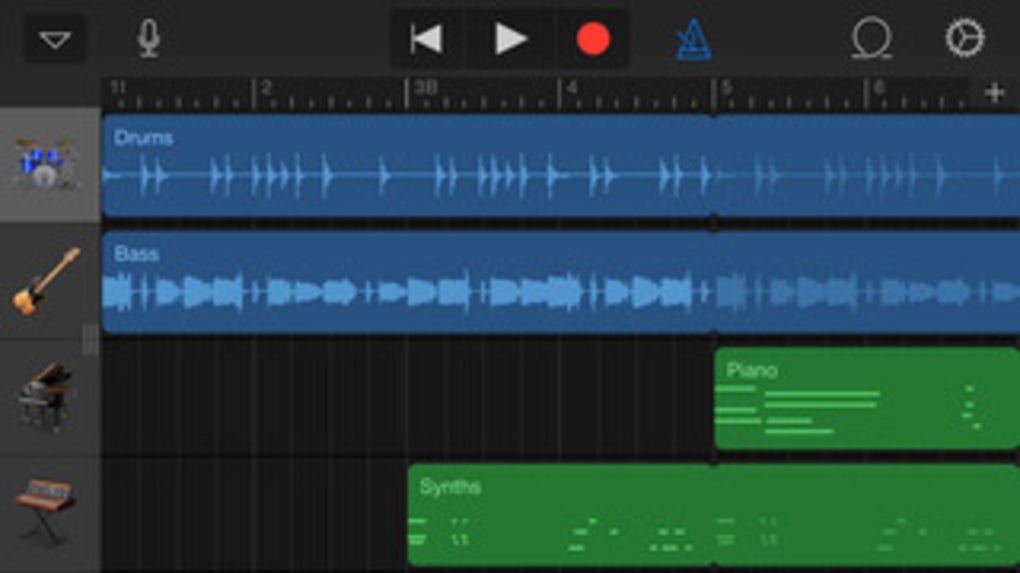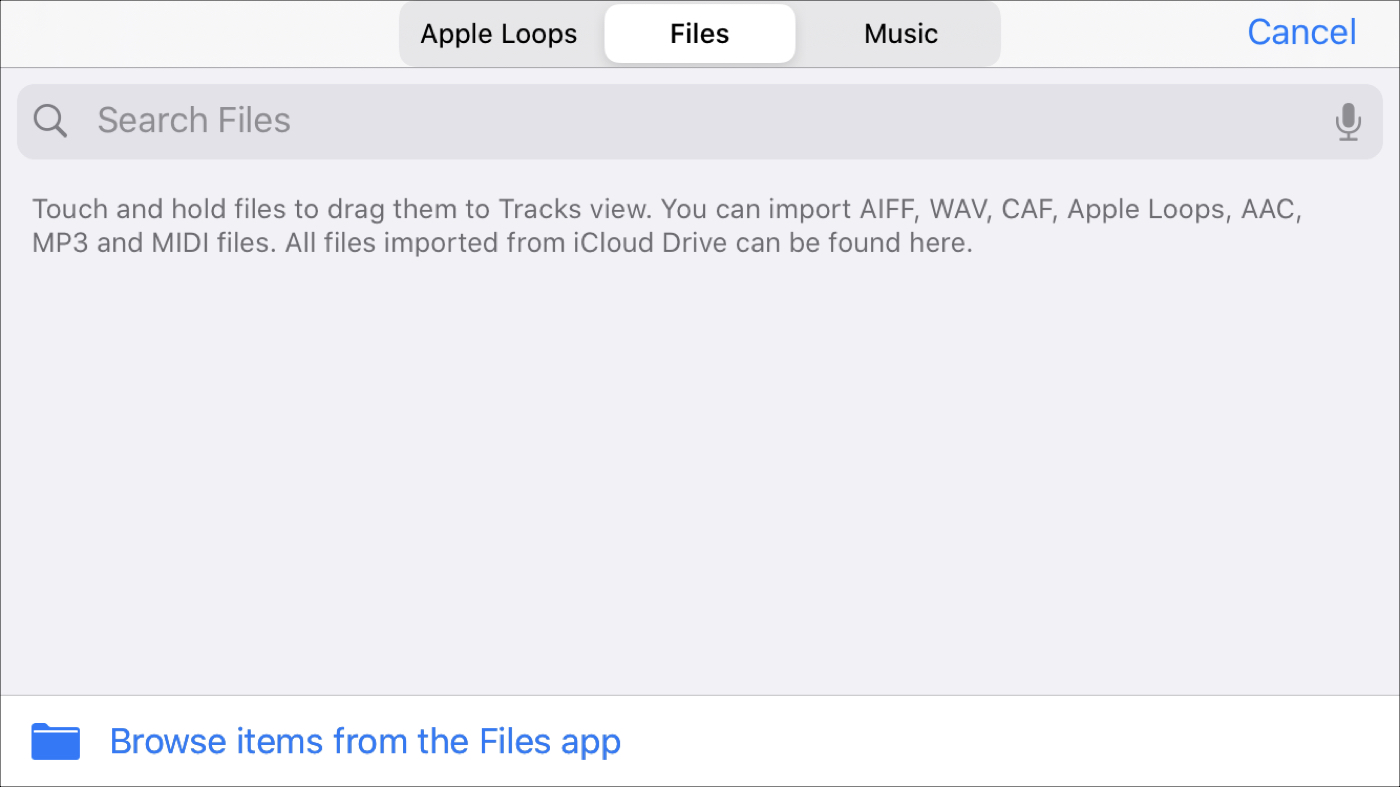How To Download A Video Edit With Garageband
In iOS 11, the My Songs browser in GarageBand works together with the Files app to keep your songs up to date across all your iOS devices. To browse your songs when you have a song open:
- How To Download A Video Edit With Garageband Software
- How To Download A Video Edit With Garageband Free
- How To Download Garageband Loops
Apr 10, 2015 1. Installing GarageBand on PC Using Andy Emulating Software GarageBand is an extraordinary, sound mixing app which is created and maintained by Apple. It enables the users to create their own customized songs, tracks and music in a short span of time. Also, they can edit an existing music created by someone else to give it their personal touch. Feb 18, 2017 In this tutorial Dr. Watson shares how to import video, strip the video's audio track, score the video using GarageBand, add SFX, record voiceover, and export the video with all of these elements. Feb 19, 2017 In this tutorial Dr. Watson shares how to import video, strip the video's audio track, score the video using GarageBand, add SFX, record voiceover, and export the video with all of these elements. Oct 21, 2019 For Mac users, you just convert it on GarageBand program; for iPhone or iPad users, you can use Video Converter Ultimate to convert the GarageBand to MP3. If you have other needs of converting audios, videos or ripping DVDs, Video Converter Ultimate also helps you to deal with issues efficiently and professionally.
How to Edit Songs From Your ITunes Library on GarageBand: This 'how to' will describe in detail the process of how to edit, merge, loop, etc ANY of your favorite songs using Garageband. Garageband is a program available for OS X and iOS Mac users that has everything you need to learn, play, record, mix. Oct 21, 2019 For Mac users, you just convert it on GarageBand program; for iPhone or iPad users, you can use Video Converter Ultimate to convert the GarageBand to MP3. If you have other needs of converting audios, videos or ripping DVDs, Video Converter Ultimate also helps you to deal with issues efficiently and professionally.
- On your iPhone, tap , then tap My Songs.
- On your iPad, tap My Songs.
Browse songs
To browse locations where you've stored songs, tap Browse in the My Songs browser—you might have to tap more than once. In the Browse menu, tap a location to open it in the browser. Locations can include your device and iCloud Drive.
You can also browse your songs by doing any of the following:
- To see songs you’ve opened recently, tap Recents.
- To look for a specific song, tap in the Search field at the top of the window, then enter all or part of the name of the song.
- To sort songs by different criteria, tap Name, Date, Size, or Tag.
- To view the documents as thumbails or a list, tap .
- To see the documents that share a tag, tap a tag in the Browse menu.
Organize your songs with folders and tags
You can keep your songs organized by creating folders and storing songs in them. To create a folder:
- Tap Browse in the My Songs browser then tap a location.
- Swipe down, then tap .
- Name the new folder, then tap Done.
- To create a new song in that folder, open the folder, then tap Create Document. GarageBand automatically saves the song in that location until you move it.
You can also use tags to organize your songs and audio files. Tags make it easy to quickly find the song or other file you need.
Tag a song
- Tap Select, then tap the document thumbnail so a checkmark appears on it.
- Tap Share on your iPad, or tap on your iPhone, then tap .
- You can select an existing tag, or create your own. To create your own tag:
- Tap Add New Tag.
- Enter a name for the tag and select a color.
- Tap Add Tag. You can tag documents with the new tag, and the tag also appears in the Browse menu.
How To Download A Video Edit With Garageband Software
Manage tags
- Tap Browse to open the Browse menu, then tap Edit.
- Tap the name of an existing tag.
- Then enter the name of your new tag.
- Tap Done.
Manage songs
You can share, move, copy, and delete songs in the My Songs browser or the Files app. Tap Select, tap the document thumbnail so a checkmark appears on it, then tap the option you want at the bottom of the screen.
- To share a song, tap Share on your iPad, or tap on your iPhone, then choose how you want to share the song.
- To copy or move the song to another folder or location, tap Move on your iPad, or tap on your iPhone, select the new location, then tap Copy or Move. If you’re copying songs between locations from iCloud Drive to your device, a copy of the song remains in the original location.
- To delete a song, tap Delete on your iPad, or on your iPhone.
Work with audio files

If you want to use audio files in GarageBand for iOS 2.3, use iTunes File Sharing on your Mac or PC to add them to your iOS device. Then, access the files from the GarageBand File Transfer folder on your iOS device.
To add audio files to your device using iTunes File Transfer:
- Open iTunes on your Mac or PC.
- Connect your iPad or iPhone to your computer using the USB cable that came with your device.
- Click your device in iTunes. Get help if you can't find it.
- In the left sidebar, click File Sharing.
- Select GarageBand, then drag files from a folder or window onto the Documents list to copy them to your device.
If you’re upgrading to GarageBand for iOS 2.3 and have existing audio files on your device, GarageBand automatically moves the files to the GarageBand File Transfer folder after upgrading.
Add audio files to your song
After you've added the audio file to the GarageBand File Transfer folder, you can them add the audio file to your song.
- Open GarageBand on your iOS device, and open the song you want to add an audio file to.
- If necessary, tap to open the song in Tracks view.
- Tap to open the Loops browser. If a dialog appears asking if you want the files moved to the GarageBand File Transfer, tap Move Files.
- Tap Audio Files, then drag the file to the Tracks area in GarageBand.
Add audio files from a third-party cloud service
How To Download A Video Edit With Garageband Free
If you want to add audio files saved in a third-party cloud service or another location, copy them to the GarageBand File Transfer folder using the Files app.
Nov 24, 2017 All replies Import the MIDI file into GarageBand 11 on the Mac (sorry, Mac only). Save that GarageBand Project. Modify the GarageBand file so it can be imported into GarageBand for iPad. Import that modified GarageBand 11 file into GarageBand iPad. Now switch to the Song where you need that MIDI. Sep 18, 2018 I've done it by direct downloading (like in the video example) and using file sharing via iTunes and has been working fine. For best results, transfer it directly to the 'GarageBand File Transfer' folder under GarageBand in the 'On My iPhone/iPad' folder. Download additional sounds and loops for GarageBand on iPad. After you install GarageBand, additional content bundled into sound packs may be available to download in the Sound Library. Sound packs can contain different types of content, including the following: Apple Loops. Import audio and MIDI files from your computer. On your computer, add the audio or MIDI files you want to import to the GarageBand File Sharing area in the Finder. In GarageBand on your iPad, set the current song section to Automatic to import the entire audio or MIDI file; otherwise, only the. 
- Open Files app, then tap Browse.
- In the Browse menu, tap the location where the file is stored, then locate the file.
- Tap Select, then tap the file so a checkmark appears on the file.
- Tap Move, tap On My [device], then tap the GarageBand folder.
- Tap the GarageBand File Transfer folder, then tap Copy. You can now add the file to your song using the Loops browser in GarageBand.
Learn more
How To Download Garageband Loops
- Learn more about using third-party cloud services with GarageBand for iOS.